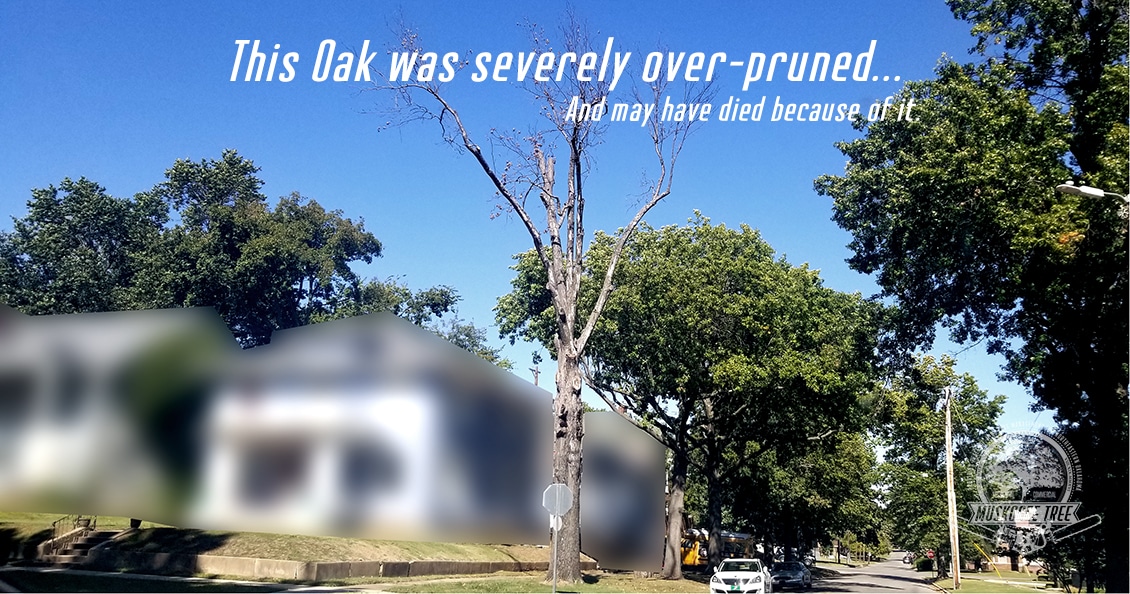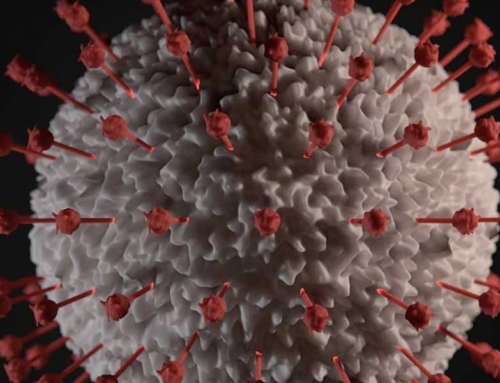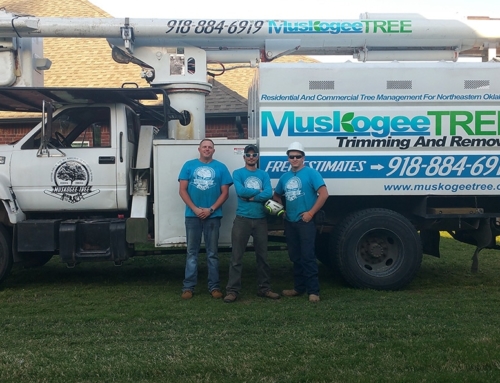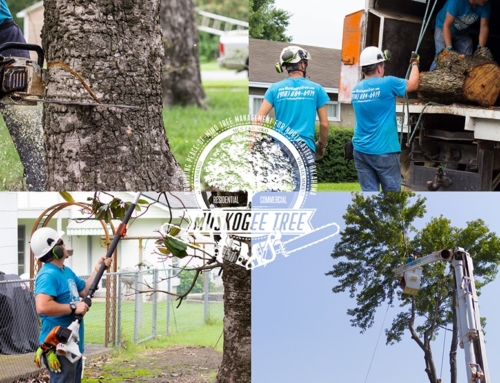The Dangers Of Over-Pruning
When this tree was originally pruned by another local Tree Care Company, it was obvious the tree had been over-pruned. All of the interior growth had been removed, all of the scaffold branches and the leader had been stripped of growth, many of the cuts were made inside of the branch collar (destroying the branch-protection-zone), and the base of the canopy was raised considerably higher than it should have been for an Oak of this size. It is entirely possible that the Homeowner demanded these specific cuts. However, in a case such as that it is always the Tree Care Professional’s responsibility to attempt to educate the homeowner on the potential negative effects of such drastic overpruning, to offer alternatives, and in some cases, to decline service.
Think about it like this. If you went to a surgeon and demanded that they remove your perfectly healthy legs below the knees, do you think they would oblige you? Sure, you might be able to find some back-alley, disgraced surgeon hard-up for cash who would do it, but no legitimate surgeon would capitulate to such a request. In the case that the Tree Care Professional chose this course of action it is still unlikely that there was any mal-intent. It is far more reasonable to conclude, however unfortunate, that they simply didn’t know how to correctly prune an Oak of this size.
When Trees are over-pruned or pruned incorreclty it causes tremendous strain on the Tree. There are several forms of over-pruning, but the most common types are Topping and Lions-Tailing. Both of these lazy practices cause their own unique forms of harm to the tree.
Typically, Topping (excessive removal of all live growth above arbitrary points throughout the entire canopy – picture a coat rack) causes an initial and sudden surge in new growth, which can lead the homewoner to believe the tree is vigorous and healthy, but nothing could be further from the truth. Eventually the tree will turn and go into sharp decline. If the tree was young and exceptionally healthy prior to the topping, it may survive and continue to grow for years to come. However all of the new growth is weakly attached, causes increased mechanical load on the unions, and the tree as a whole will be more prone to decay and structural failures. The science in this area is now unquestioned. Topping is extremely harmful for trees, and almost always leads to death. At the very least the tree’s natural shape and overall health will have been permanently damaged, reducing or eliminating it’s ability to fight infections and grow.
Lion’s Tailing is a term that describes cleaning out and “over-raising” the canopy. It results in long, narrow, clean branches with tufts of smaller branches and leaves on the end. This can be appealing to home-owners for the “sharp” and “un-cluttered” look that results. However, research has made it clear that this method of pruning is one of the worst things you can do to your trees. Branches are like lever-arms. When the wind hits the exterior of the canopy it creates a “sail effect” that causes a massive amount of mechanical stress to be transfered down the long branch. The smaller branches and leaves that have been removed typically disperse the wind forces throughout the tree evenly, allowing it to “weather the storm” with much lower chances of suffering structural failures. When you clean out the interior of a canopy and leave all the growth on the outside, wind stresses are actually increased along the branches, creating a much higher likelihood of mechanical failure (breaking branches). Along with this, the tree will react with a flush of new interior growth to make up for the drastic loss of green material. Within just a couple short growing seasons all the money spent on that clean interior will have been wasted.
In addition to over-pruning, pruning that is performed improperly can also do drastic damage. A pruning cut made just one or two inches away from the correct location can cause the trees resistance to disease, decay, and insects to plummet in that area, opening avenues for rot to enter branches and the trees stem (trunk).
If you have Trees on your property that are hanging over your roof, vehicles, or growing taller than you are comfortable with, Muskogee Tree can give you alternative options for addressing your concerns without permanently damaging your trees. We can discuss the best methods for reduction, raising, and mitigating structural weakness in a way that will preserve the tree’s natural growth patterns and health, while still acheiving your desired results.





